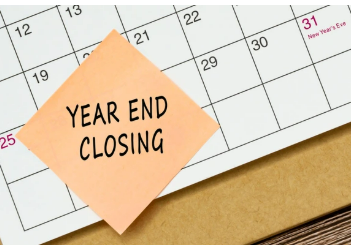Are Your Discounts Actually Helping Your Business? Here’s How to Know.
Black Friday and Cyber Monday are prime times for running sales—discounts flying left and right, customers rushing to grab deals. But as a business owner, have you ever stopped to ask:
👉 Are these discounts actually making me money, or just cutting into my profits?
Many businesses focus on driving sales but overlook how discounts impact their bottom line. A successful discount strategy isn’t just about more customers—it’s about tracking the numbers to see if those promotions are truly worth it.
Let’s break it down into simple steps so you can track, analyze, and optimize your discounts for long-term business success.
1. Track Discounts the Right Way
Instead of lumping discounts in as an expense, set up a contra-revenue account in your Chart of Accounts. This keeps your revenue numbers accurate while still showing the impact of discounts.
✔️ Why it matters: It gives you a clearer picture of your net sales so you can see exactly how much revenue you’re giving away.
📌 Pro Tip: Use sub-accounts to track different types of discounts (Black Friday sales, loyalty programs, referral discounts) so you know which promotions drive the best results.
2. Know Your Break-Even Point
Offering a discount might boost sales, but how do you know if it’s actually profitable?
Use these formulas to calculate the break-even volume—the number of sales needed to make up for the revenue lost from a discount.
📊 Percentage-Based Formula
This formula shows how much your sales volume needs to increase to break even:
📌 Break-Even Sales Increase (%) = (Discount % ÷ Gross Margin %) × 100
🔹 Example:
Discount: 20%
Gross Margin: 40%
Required Sales Increase: (20 ÷ 40) × 100 = 50%
That means you’d need a 50% increase in sales to offset a 20% discount.
✔️ When to use: Perfect for a quick check before running a promotion.
📊 Unit-Based Formula
This method calculates how many units you need to sell to break even.
📌 Break-Even Volume = Fixed Costs ÷ (Selling Price – Variable Cost per Unit)
🔹 Example:
Fixed Costs: $1,000
Selling Price (after discount): $80
Variable Cost per Unit: $50
Profit per Unit: $80 – $50 = $30
Break-Even Volume: 1,000 ÷ 30 = 34 units
✔️ When to use: Best for setting realistic sales targets during a promotion.
3. Look at the Big Picture: Net Profit Margin
Even if you hit your break-even point, discounts can still hurt your bottom line if they come with high marketing or fulfillment costs. That’s why you also need to check your net profit margin after a promotion.
📌 Net Profit Margin (%) = (Net Profit ÷ Total Revenue) × 100
✔️ Why it matters: A discount that increases sales but slashes your profit margin isn’t actually helping your business.
💡 How to Use This Together:
Before a promotion: Use the break-even formula to decide if a discount makes sense.
After a promotion: Check your net profit margin to see if the campaign actually added to your bottom line.
🔹 Example: You calculate that you need a 50% sales increase to justify a 20% discount. After the sale, you realize that while your sales volume went up, your marketing and fulfillment costs wiped out any real gains.
4. Be Strategic with Discounts
Not all discounts are created equal. Some bring in repeat customers, while others just attract bargain hunters who may never return.
Here’s how to make discounts work for your business:
✔️ Focus on promotions that attract repeat or high-value customers
✔️ Create urgency with limited-time offers to boost sales during slow periods
✔️ Pair discounts with upselling strategies to increase transaction value
🚀 Why it matters: Strategic discounts help increase customer loyalty and grow long-term revenue, rather than just cutting prices for a short-term sales boost.
Your Discounts Are Data—Use Them Wisely
Tracking discounts isn’t just good bookkeeping—it’s a smart business strategy. By following these steps, you’ll be able to evaluate whether your promotions are actually profitable and make better decisions for future sales.
✅ Track discounts separately in a contra-revenue account
✅ Calculate your break-even point before offering major discounts
✅ Check your net profit margin to ensure discounts are actually helping your bottom line
📩 Need help organizing your finances or tracking your discounts properly? Let’s chat! Schedule a free consultation today.



